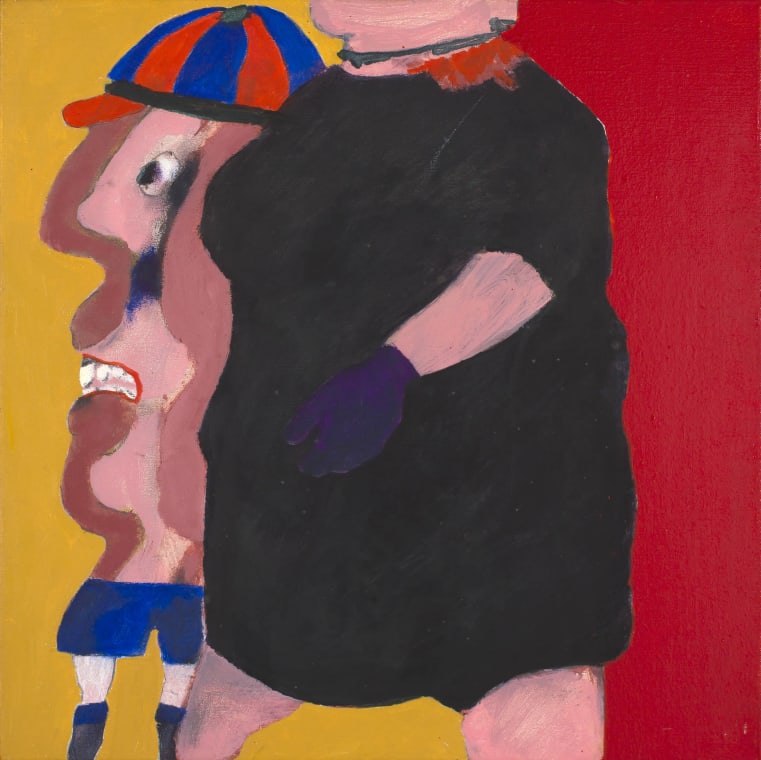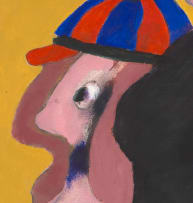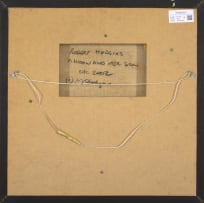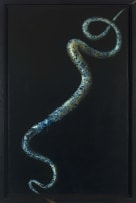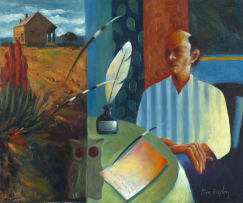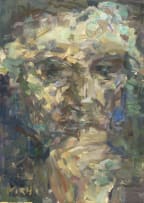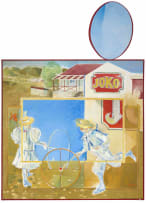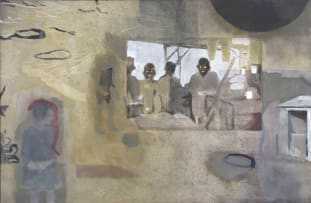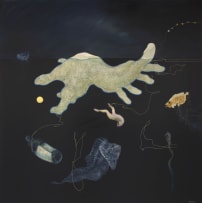Robert Hodgins
A Widow and her Son
Incl. Buyer's Premium & VAT
About this Item
signed, dated 2002, inscribed with the title and the medium on the reverse
Notes
This sardonic depiction of an egg-headed schoolboy, seemingly without a torso, accompanying his mother, a plump, purple-gloved widow in black, revisits an enduring subject of western art history: the mother and child union. As a motif, the pairing of Virgin Mary with Christ Child is almost as old as Christianity itself. The emergence of confident bourgeois societies in the nineteenth century, notably in France and the United States, saw artists like Mary Cassat and Edgar Degas secularise this religious motif. Picasso would further deconsecrate this sacred image. Hodgins was a keen admirer of Picasso. In 1957, during an intense period of making and showing, he produced an oil titled Mother and Child. Rendered entirely in a reddish-brown palette, his neo-classicist composition featured a bulky naked woman cradling a child against her stomach. As a composition, it hearkens back to Picasso, to old glories. Hodgins shortly lost faith in this anachronistic way of rendering his ideas. The mood of his paintings started to alter: "Plump ladies became heavy women, thick-thighed. Greek warriors became hulking threats."1 This late work, from a time when vibrant colour was also central to his compositions, reveals Hodgins the iconoclast. Yes, he is still riffing on tradition, using as schema a familiar devotional image, but in a doubtful, even derisive way. While laden with signifiers of her status, the most vital feature of the peremptory widow, her head, is largely omitted. Hodgins delightfully compensates for this absence by exaggerating the head of his gauche youth.
1. Robert Hodgins (2002) 'A String of Beads' in Robert Hodgins, Cape Town: Tafelberg Publishers, page 29.
Provenance
The Professor Leon Strydom Collection.
